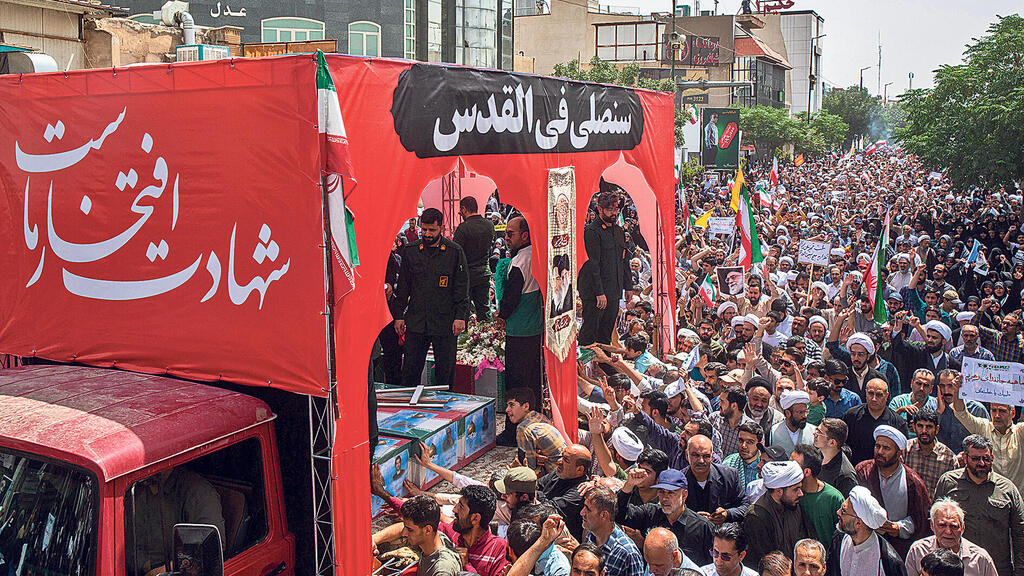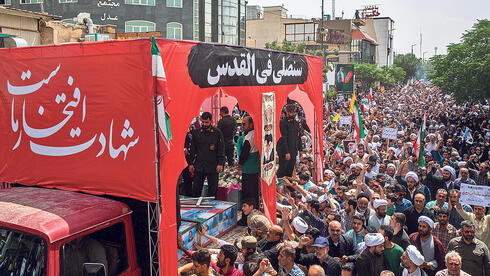
Dark finance: How Iran defies sanctions
From oil to bitcoin, a covert system funnels billions to the regime
Since the United States withdrew from the nuclear agreement in 2018, Iran has developed extensive and sophisticated international networks of financial intermediaries - including shell companies, banks, and exchange offices - that have enabled it to circumvent sanctions reimposed by the United States, the European Union, and the UN Security Council. These networks operate primarily in neighboring and financially lax jurisdictions such as Turkey and the United Arab Emirates, often with the cooperation of local actors. Although only a few cases have been exposed, they reveal not only the system's effectiveness but also the vast scale of the operation, which has helped sustain the Iranian regime, including its weapons programs and financing of terrorism.
By its nature, shadow capital is difficult to quantify. Yet, the survival of Iran’s economy, despite expectations of collapse under heavy sanctions, indicates that tens of billions of dollars are flowing through alternative channels. Significant sums have also been laundered by regime elites for personal gain.
Previously published evidence shows that individuals close to the Supreme Leader’s inner circle have used these shadow banking networks to embezzle billions from the state treasury. In many cases, the volume of this unofficial capital exceeds the government’s official resources, especially given that it is tax-exempt and benefits a narrow elite.
Various estimates suggest that roughly one-third of Iran’s GDP - over $400 billion annually - flows through the shadow economy and unregulated capital markets. This economy is largely fueled by the export of oil, petrochemicals, and metals. The annual value of these covert networks has grown rapidly since the nuclear agreement collapsed in 2018. Even during the Trump administration’s "maximum pressure" campaign (2019–2021), oil exports persisted. By 2022, Iran - benefiting from the global disruptions caused by the war in Ukraine - had nearly regained its pre-sanctions oil revenue levels. Although the sanctions officially denied Iran access to around $100 billion, in practice much of that sum was recovered via alternative mechanisms such as commodity swaps, gold, and cryptocurrencies.
Even during periods of intensified sanctions, Iran continued to export substantial quantities of oil and oil products, albeit indirectly. While official statistics are unavailable due to sanctions, estimates place Iran’s unofficial oil revenues at $54 billion in 2022 and $53 billion in 2023. In 2024, this figure reportedly surged to a decade-high of $67 billion.
These figures demonstrate that Iran's shadow economy is robust enough to finance the regime and its military apparatus. In contrast, Iran’s officially frozen assets abroad have dwindled to just a few billion dollars. For example, Iran sought to release $7 billion frozen in South Korea, ultimately only $6 billion, which was transferred to supervised accounts in Qatar in September 2023. In Europe, only a small number of central bank accounts have been frozen since 2018. Meanwhile, major Asian oil importers such as India, Japan, and China continued transacting with Iran by routing payments through designated accounts or via barter.
To manage its shadow economy, Iran built a secret financial system that channels tens of billions of dollars annually through foreign banks, shell companies, and offshore accounts, coordinated by a covert clearinghouse in Tehran. According to U.S. intelligence, this network spans numerous countries. A June 2024 report from the U.S. Treasury found that the shadow banking system included at least 50 companies and individuals across Hong Kong, the UAE, the Marshall Islands, Iran, and Turkey. Iraq, too, was a key hub for smuggling U.S. dollars into Iran through local money changers, until the U.S. curtailed Iraq’s access to American currency.
China is Iran's primary oil export destination, receiving 80%–90% of shipments in recent years. Yet the profits do not flow directly to Tehran but are funneled through intermediaries in the UAE and Hong Kong. Turkey serves as a key channel for cash, gold, and goods. The UAE has become a major base for companies affiliated with Iran’s Petrochemical Commercial Company (PCC) to liquidate billions in sales via brokers and shell entities in Dubai.
Related articles:
Other countries involved in Iran’s shadow finance network include Syria (until Assad's regime weakened), Venezuela, and Lebanon (until the recent war). In Europe, the network has facilitated the smuggling of spare parts and equipment, often via companies in Eastern Europe.
Iran’s shadow networks rely on a range of sophisticated business models to obscure financial flows and maintain global trade. A central strategy is the creation of international shell companies, typically registered in tax havens such as the Caribbean, Malaysia, Hong Kong, or the UAE. These shell companies are nominally owned by foreign nationals or Iranians with dual citizenship but are often directed by Iranian regime-linked banks or entities like Rahbar companies - fronts created by the central bank to bypass sanctions.
Once established, these shell companies open bank accounts to facilitate transactions. When a sanctioned Iranian firm wants to export oil, methanol, or metals, the shell company "sells" the product to a foreign buyer, sometimes falsifying certificates of origin or mixing the goods with sanctioned-free products. Payments are made in hard currencies such as dollars, euros, or yuan, and transferred through a web of accounts until reaching the Iranian end user, either in cash or through in-kind compensation.
The same structure is used for imports. For example, oil profits deposited in Dubai can be used to pay for Russian wheat, with the Dubai shell company acting as the nominal purchaser. The Central Bank of Iran maintains an internal registry to ensure exporters and importers receive their share. Exporters are compensated in local currency credits, allowing them to make further imports. This flexible two-stage system severs the direct connection between Iranian sellers and foreign buyers.
The dominant sectors in this shadow economy include oil and gas, petrochemicals, and metals. Networks of fuel traders, shipping brokers, and chemical intermediaries abroad are integral to the system. Gold and precious metals also play a major role: Iran has long used gold to sidestep dollar restrictions, and today regime brokers deal in gold, diamonds, and even Bitcoin to transfer value discreetly.
Cryptocurrencies have gained traction in recent years. Iran legalized Bitcoin mining to fund raw material imports, and some companies reportedly convert profits into Bitcoin to be exchanged abroad for yuan or Hong Kong dollars. While crypto alone can't support Iran’s entire economy, it has become a useful tool for bypassing dollar-based financial systems - though its volatility poses limits.
Iran has also employed alternative banking systems. In response to being cut off from SWIFT, Tehran and its allies have tried developing independent payment networks. After 2018, Iran established small banks in Iraq, Armenia, and Afghanistan, sometimes using local proxies, to facilitate transactions disguised as domestic banking activity. Iran has also aligned with Russia's efforts to build a regional payment framework and has increasingly relied on non-dollar currencies for trade with India and Turkey, including euros, dirhams, rupees, and barter.
Inside Iran, a vast shadow economy is controlled by the Revolutionary Guards and quasi-governmental foundations, blurring the boundaries between state and private enterprise. These groups exploit diplomatic channels - for instance, transporting cash in diplomatic pouches - and utilize networks of Iranian students and expats to front seemingly civilian companies abroad.
Another model involves "bank identity cleansing," in which friendly banks scrub SWIFT transfers of identifying information. Bahrain’s Future Bank, which operated under Iranian-Bahraini ownership for over a decade, concealed roughly $7 billion in Iranian transactions by instructing staff to omit references to Iran and avoid routing payments through U.S. financial channels. Similar practices are believed to continue elsewhere.
While this shadow system helps Iran circumvent sanctions, it comes at great cost to ordinary citizens. Regime insiders and oligarchs reap vast profits from smuggling, while the broader population suffers from inflation, a rising cost of living, and entrenched corruption. Much of the black capital never enters public coffers, widening social inequalities. Industrial and oil revenues enrich politically connected elites but contribute little to Iran’s real economy.
The most significant side effect is inflation. When large segments of the economy operate off the books, the central bank cannot effectively manage monetary policy or exchange rates. Massive covert currency exchanges and systemic corruption result in budget deficits, prompting authorities to print money - a key driver of inflation.
Finally, the black market for dollars, often run by the Revolutionary Guards, continues to erode the value of the rial. Authorities have largely turned a blind eye. In 2018, an illegal currency exchange scandal caused a spike in the dollar’s free market rate, triggering food and fuel price hikes. The regime executed several "currency barons" for speculation, but they were mere scapegoats compared to the institutional actors behind the system.
